ABOUT US
“Wallpaper is wood pulp and colored clay made magic by mans imagination.
There is no doubt that wallpaper imparts a warm and cozy feeling to a room. With the wind outside and a fire on the hearth, a room becomes a world in itself, which a man can make his own-its horizons as intimate and provincial, or as abstract and worldly as he desires. In Central Europe, there is a folk saying: “The wind never blows through a papered room.”
“Wallpaper beguiles us with a whimsical variety of visual conceits and simply exists as wonderful evidence of human creativity.”
In 1937, Dorothy and Clifford Waterhouse bought the Captain Jimmy Fish house on Cape Cod, circa 1799. During the renovation, Dorothy uncovered seven layers of wallpaper. The early layers were hand-blocked prints, some with the royal (English/French) seals and tax stamps intact on the back of the wallpaper. Dorothy became entranced by the many layers of lovely designs with charming colorways. For many years thereafter, Dorothy Waterhouse visited old New England homesteads, searching beneath layers of wallpaper or paint as well as attics, trunks and old boxes, for fragments of original wallhangings. Many documentary papers were found with exquisite original colors and designs. Since many were created before the Machine Age, they were often painted completely by hand, stenciled or printed using hand-carved wood blocks. The colors used were of home-mixed pigments, and the designs superb examples of grace in composition.
Our collection contains many authentic reproductions of original wallpapers that were first used in the United States, circa 1700-1895. During these years, sea captains returning from trading in France, England and Asia brought back handmade papers. These were designed by true artists, who excelled in the creation and painting of wall hangings. Many of their designs were inspired by the valuable brocades and tapestries which adorned the homes of wealthy nobles and merchants. These imported papers were mainly sold in New England seaport cities and towns.
Our sister company, Thomas Strahan Collection, is the oldest, modern-day wallpaper company in America having been founded in 1866. They started selling mostly imported wallpapers in Boston, and several years later, Thomas Strahan started manufacturing their own wallpaper collection, eventually creating over 12,000 designs.
What started out as a passionate hobby, became a business in the late 1940s. Dorothy had a knock on the door from an artist, Binnie Wilson, who was sent by Warner Wallpaper out of Chicago to search New England for colonial designs that she could reproduce. After months of scouring New England looking for documents, Dorothy Waterhouse was recommended. Dorothy was initially reluctant about reproducing her documents commercially, but was eventually convinced. Warner Wallpaper issued two collection books: the first collection book was introduced in 1950 and was titled, Waterhouse Documentary Collection of Wallpaper and Matching Fabrics. The second book was introduced in the mid- to late 1950s and was titled, The Waterhouse Collection by Dorothy Waterhouse for the Warner Company. The first one was based on the recoloring of Dorothy’s original documents and print/distribution by Warner Wallpaper. Dorothy’s third collection book was released in the Fall of 1959 and was comprised of 13 designs. This specific book was produced by Katzenbach and Warren with coordinating fabric produced by Greeff Fabrics. We are unsure of when Dorothy was introduced to Katzenbach and Warren, but Bernard Scott, who eventually partnered with Dorothy, was the New England manager for Katzenbach and Warren. There is a very good chance they became acquainted, and Bernard, an artist, most likely convinced Dorothy to do the third collection book with Katzenbach and Warren. It appears that Bernard and Dorothy were partners beginning in the 1960s, while Bernard remained senior manager at Katzenbach and Warren.
As Bernard became more enmeshed in Waterhouse, he began recoloring various designs and printing wallpaper stock. The next eight collection books were released, initially through the partnership of Dorothy and Bernard Scott and then later by Bernard individually when Dorothy retired around 1977. The first 7 books (Volume IV released in 1974 and Volume V released in 1978) were printed and assembled by Waterhouse and the primary distribution of the collection books was through Katzenbach and Warren (continuation until Katzenbach and Warren was sold to the Imperial Home Decor Group (IHDG). Bernard worked closely with commission surface-printers like Vogue Prints and Thomas Strahan (which both companies completed commission printing for other firms) as well as several silk screen hand-printers. To expand the Waterhouse collection of documents, Thomas Strahan allowed Bernard to run some of the Thomas Strahan Collection designs under the Waterhouse Wallhangings brand. Likewise, Katzenbach and Warren handed over various designs to Bernard to print under the Waterhouse brand.
Through extensive research, Dorothy became a wallpaper expert and started giving guest lectures around the North East. She literally “uncovered” some interesting facts: often early American homes glued newspapers to the rough plaster walls to smooth out the rough plaster as well as act as an insulator and a wallpaper liner.
Over the years, we have enhanced the Waterhouse Wallhangings collection with patterns that are more contemporary in nature as well as stripes, strié and various textures in addition to our archival designs. Therefore, our collection has patterns that will complement any decor.
Waterhouse Wallhangings and Thomas Strahan have been your partner in recreating historic wallpaper and supplying period-appropriate wallpapers since 1908. Click here to view our list of Historic Museum Restorations.
Lance Houpt, Carol Bruce, Bernard Scott and Pillar Garo. Image by Historic New England
Dorothy Waterhouse
Bernard Scott and Danny Recoder at Dorothy’s Commonwealth Ave townhouse in Boston, MA
“...We believe that these patterns provide an artistic and historical perspective, that documents are more than just a gift of beauty. They are a living testament from the artists who created them. In their lives, most of these anonymous men and women received no tribute or recognition for the work they did, but if the interior design community can preserve some of them, then perhaps part of them will live again through us. It is a race against time, however. With each passing year, hundreds of important and irreplaceable documents are lost due to aging, neglect and lack of funds, even with the conservation departments of large museums. Such designs will ultimately survive only if they are found in time, reproduced and made available to the decorative industry.”
“A thing of beauty is a joy forever...”
RELATED COLLECTIONS & BRANDS
When Thomas Strahan opened the manufactory in 1885, he took on George A. Smith as his business partner. Thomas Strahan remained president until his death in 1910. (He was also a two-term mayor of Chelsea, MA and served in the Massachusetts Statehouse.) Full ownership passed to George Smith, and he remained with the company for 61 years until his retirement in 1947. Several industry veterans were president of the firm between 1910-1947. Mr. Smiths’ son, Abbot Smith, joined the company after graduating from Harvard in 1918. Rising through the ranks, he became president in 1947. (Abbott Smith was a friend of President Kennedy and when Jackie Kennedy re-decorated the White House Thomas Strahan donated wallpaper.) Chris Weld joined the firm in 1956, apart of the 4th generation of Welds working at Thomas Strahan. In 1965, he was elected President. Paul Chase was elected Vice President and Treasurer in 1965 as well. In 1969, Abbott Smith sold Thomas Strahan to Chris Weld and Paul Chase. They bought several brands in the finished home goods industry. By the late 1990s, Bernard Scott (the owner of Waterhouse Wallhangings and who did most of their wallpaper printing at the Thomas Strahan, Chelsea MA plant) became the sole owner of Thomas Strahan. Bernard Scott put together a new wallpaper book volume entitled: the 115th Anniversary Collection. By 2003, the city block long wood frame structure built by Thomas Strahan in 1903 and containing the five large surface-printing presses (manufactured between 1880 and 1948) were no longer viable. Most of the wallpaper manufacturers in the United States and Canada had dropped the surface-printing presses/technique in favor of newer technologies. Bernard Scott moved most of the surface rollers to one of the very few mills left with surface-printing presses still in operation: Vogue Prints wallpaper mill.
Many of the Waterhouse Wallhangings and Thomas Strahan designs were converted to the hand-printing technique utilizing silk screens. This enabled smaller runs and made custom more affordable. By the late 1990s, Bernard Scott sold Waterhouse Wallhangings to the “Two Jims” (Jim Burke and Jim Early) to be able to concentrate on developing the Thomas Strahan archives and building the commission printing mill business. Waterhouse Wallhangings, with the “Two Jims” at the helm moved the business into the Thomas Strahan mill and worked with Bernard on design work for both Waterhouse and Thomas Strahan. Close to when the Thomas Strahan mill closed, Bernard purchased back the Waterhouse Wallhangings brand. He continued to develop and market the two brands, Waterhouse Wallhangings and The Thomas Strahan Company, until he sold the collections to Lance Houpt in 2008. Lance Houpt continues to develop the extensive archives of both companies, create new artwork and produce new collections, under both the Waterhouse Wallhangings and the Thomas Strahan brands. The Thomas Strahan Collection is spearheaded up by Lance Houpt’s partner Katherine Porter.
Thomas Strahan Company
In 1866, Thomas Strahan began distribution of European wallhangings in the United States. During a trip to Europe, Thomas convinced an English block-printer to emigrate to Boston, and in the early 1880's, he launched his own collection and print-works. The company continued block-printing until labor shortages during World War II made this form of wallpaper printing unfeasible. Most of the 12,000+ designs were printed on either 8- or 12-color surface-printing machines imported from England. At the height of production, they operated 5 surface-printers, the oldest of which being a Waldron Machine manufactured in England during the 1880s. These printing presses were used until the Chelsea Mill closed in 2003.
Thomas Strahan
Inez Croom
In the early 1930s, Inez Croom graduated from the New York School of Interior Design (NYSID) and worked as a faculty member from 1934-1979. (NYSID went on to establish a Memorial Scholarship in her name.) Upon graduation from NYSID, she became an assistant to Rose Cummings before becoming a protege of noted wallpaper historian and collector, Nancy McCelland.
Inez Croom was a fellow and charter member of the American Institute of Interior Design (later ASID) and a founding member of the Decorator’s Club. She participated in many showhouses and was a frequent guest lecturer on panels discussing trends in the interior design industry.
By the 1940s, Inez Croom had established two companies: Inez Croom, Interior Design and Inez Croom, Inc. (an artisanal studio located in New York City producing highly decorative hand-printed wallpaper collections). Magazine articles and advertisements from the time period indicated that her studio were quite active.
To commemorate the recent 100 year anniversary of NYSID, students were invited to participate in the recoloring of several of the Inez Croom mid-century wallpaper designs. Orli Ben-Dor, market editor of the Hearst Design Group, talked to NYSID students about color forecasting and current trends in wall coverings. The team met at the John Rosselli showroom at the Decoration and Design Building (DDB) to kick off the project focusing on recoloring six Inez Croom wallpaper designs in celebration of NYSID’s 100th anniversary
R. Abbot Smith, Thomas Strahan Co. Principal and President (1947-1969)
Purchase of Thomas Strahan Co. out of bankruptcy in 1991 (Not shown: Plant Manager Jose Torres)
Inez Croom
Mid Mod Wallpaper Co (Mid-Century Modern)
Mid Mod Wallpaper Co focuses on documents inspired by designs from the 1950s-1960s. Some of the best examples of this design and architecture are MiMo (Miami Modern,) CiMo (Catskills Modern) and on the west coast: "Googie." Some of the best works of the architecture and design from this period still remain and can be found in Palm Springs and Miami Beach. It was the age of new possibilities, and many of the designs were inspired by the "atomic age.” The design of this era was driven by the post World War II baby boom, the explosive growth of the interstate highway system, the plethora of jet age-inspired car details, motels, drive-in theaters, the Las Vegas Strip and more.
Galacar & Co
In 1991, Kitty and Frederick Galacar introduced a line of fabrics and coordinating wallpapers. Frederick, an artist with a superlative sense of color, combed through many of the worlds greatest museums archives looking for design inspiration.
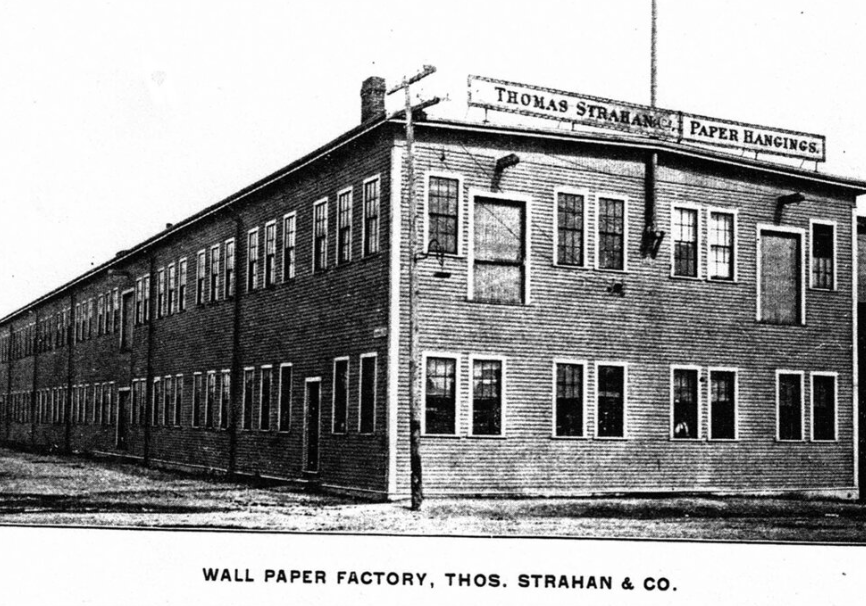
The Thomas Strahan Manufactory in 1903
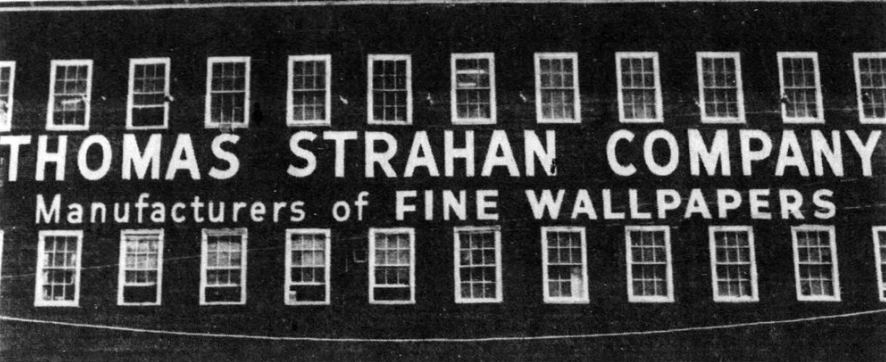
The Thomas Strahan Manufactory in 1978
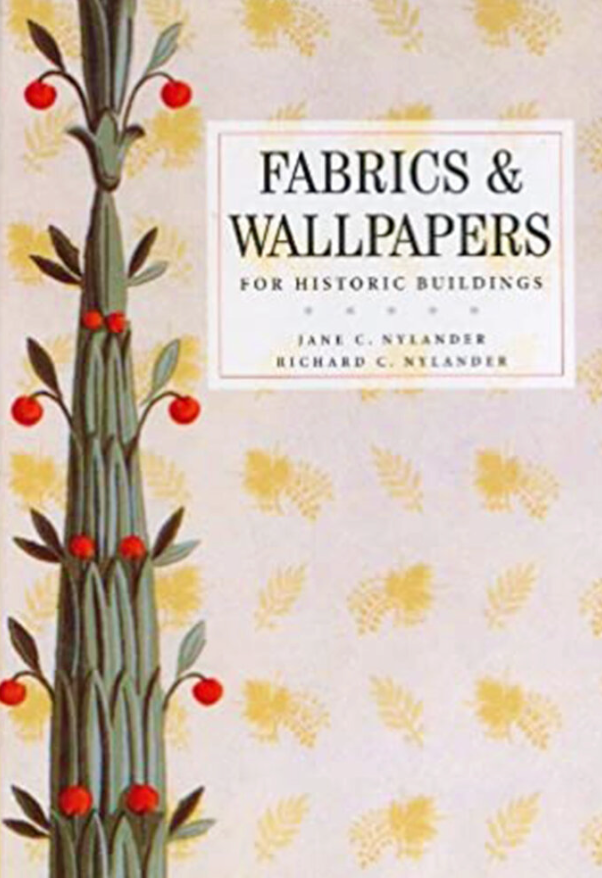
Resource from Jane and Richard Nylander

Boston Globe Article from 1908 referring to the restoration of the Paul Revere house by Thomas Strahan

Thomas Strahan Advertisement from 1951
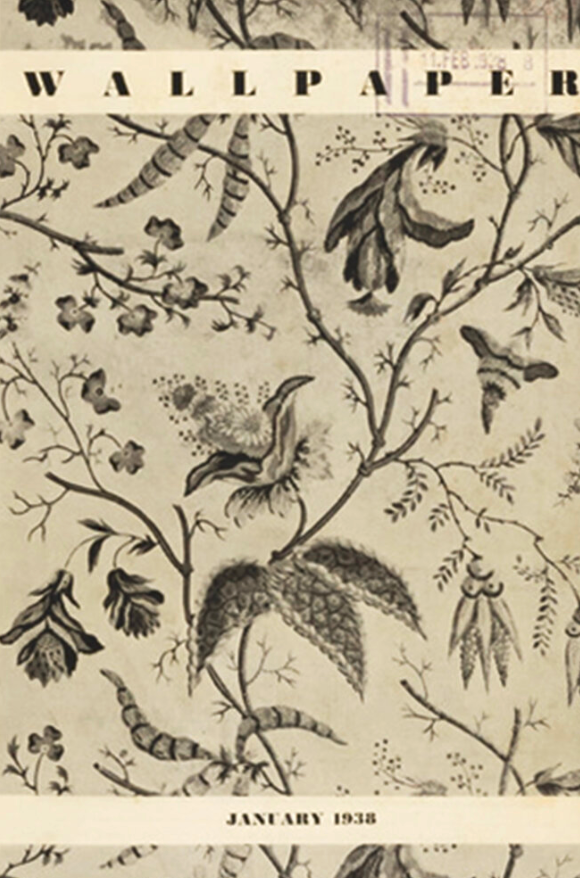
WH 158 East India from the January 1938 cover of Wallpaper Magazine
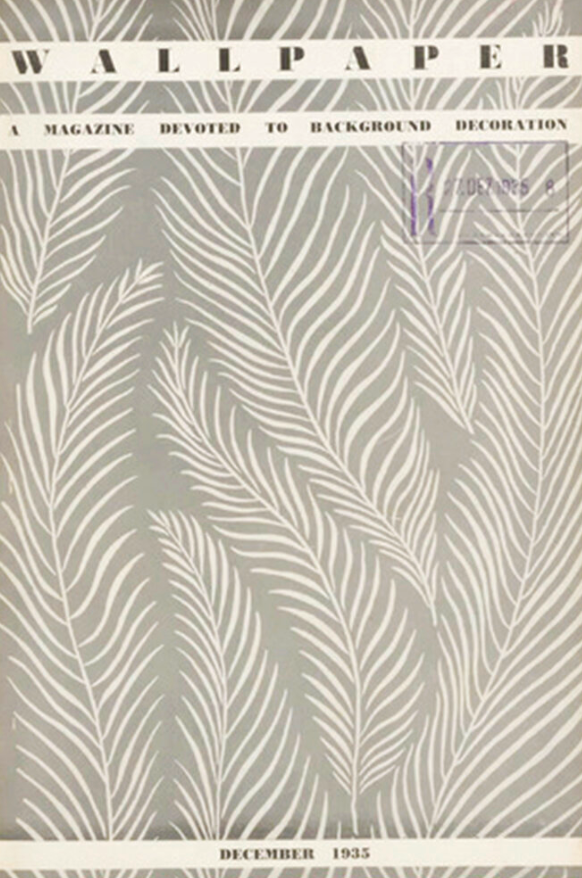
TS 7183 Palm from the December 1935 cover of Wallpaper Magazine

The 1966 re-issue of the original 100 series of block-printed scenics and sidewalls
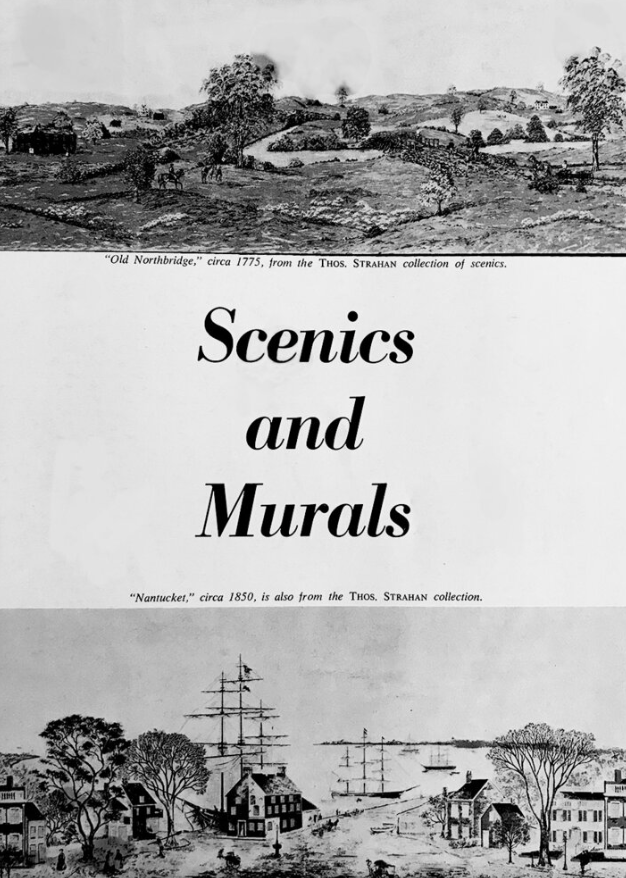
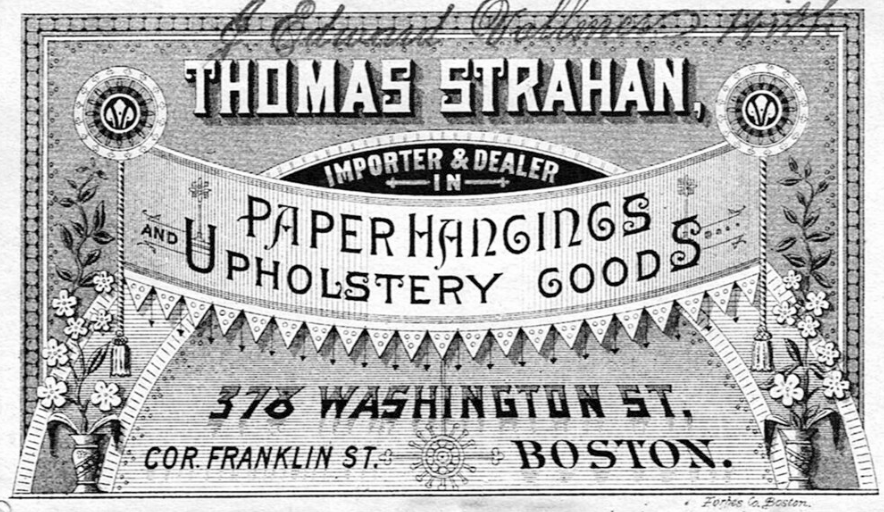
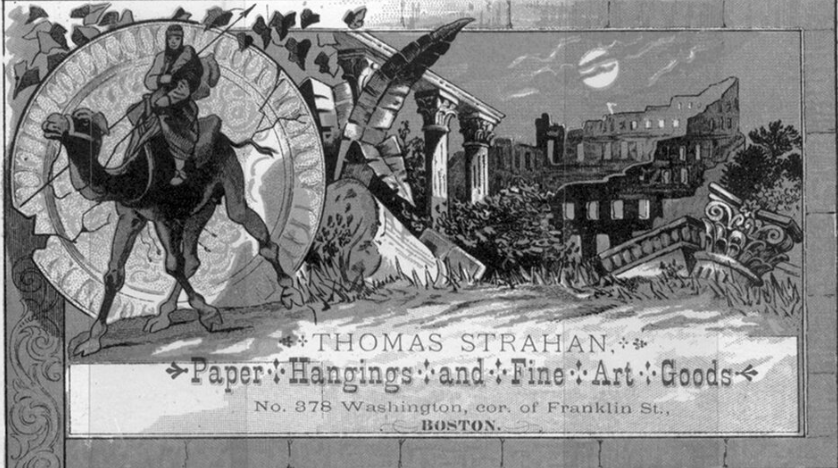
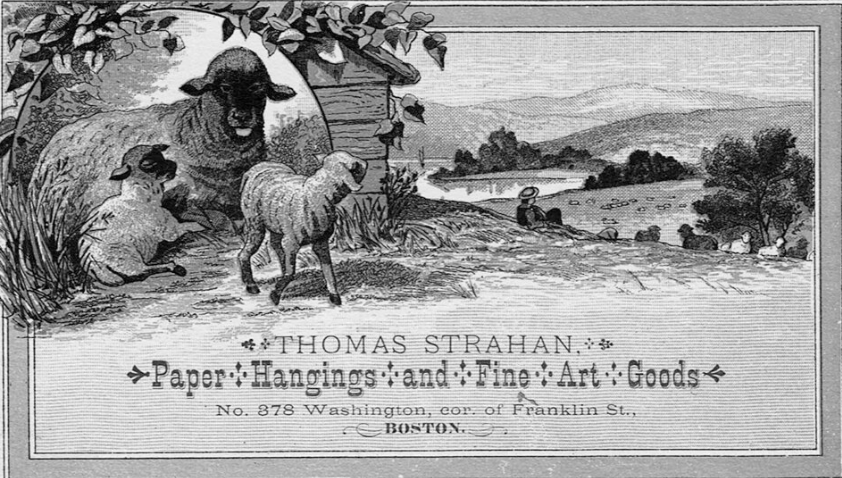
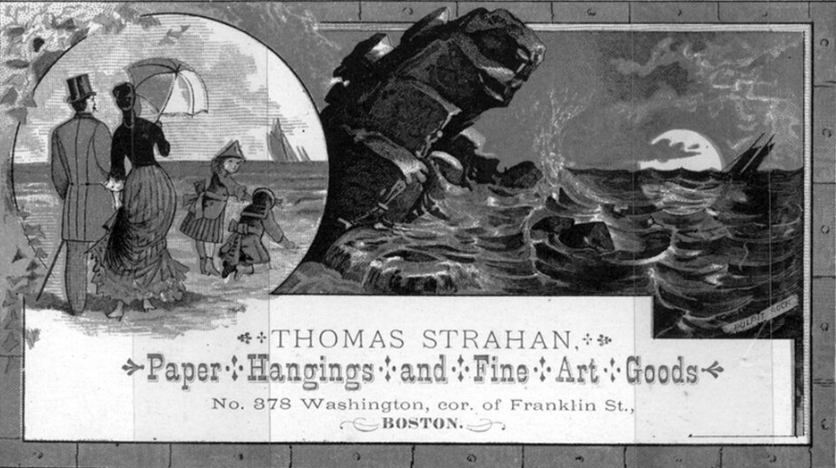

Thomas Strahan Flower Power in 1968

The Country Home of Thomas Strahan in Jackson, NH

The 1894 Collection featured in The Decorator and Furnisher Magazine
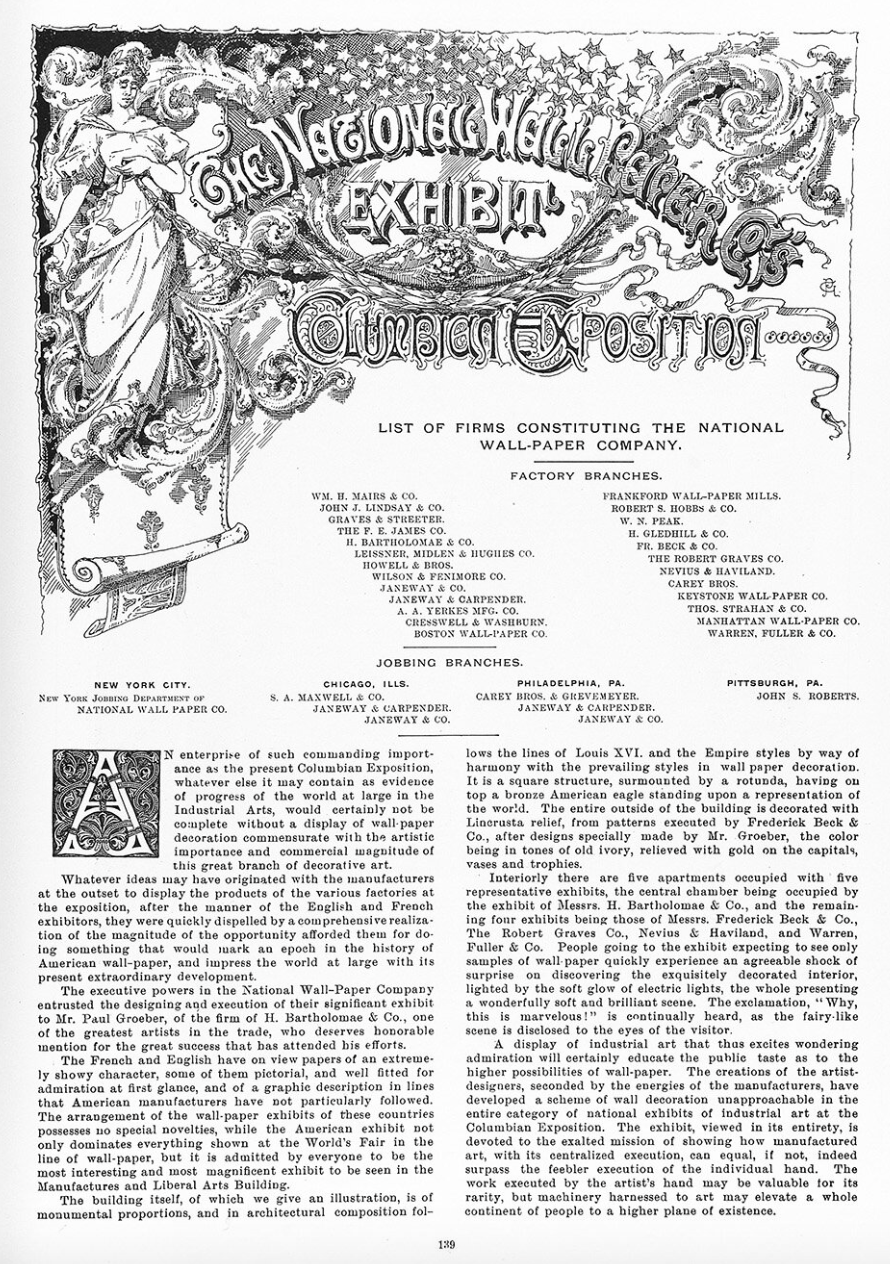
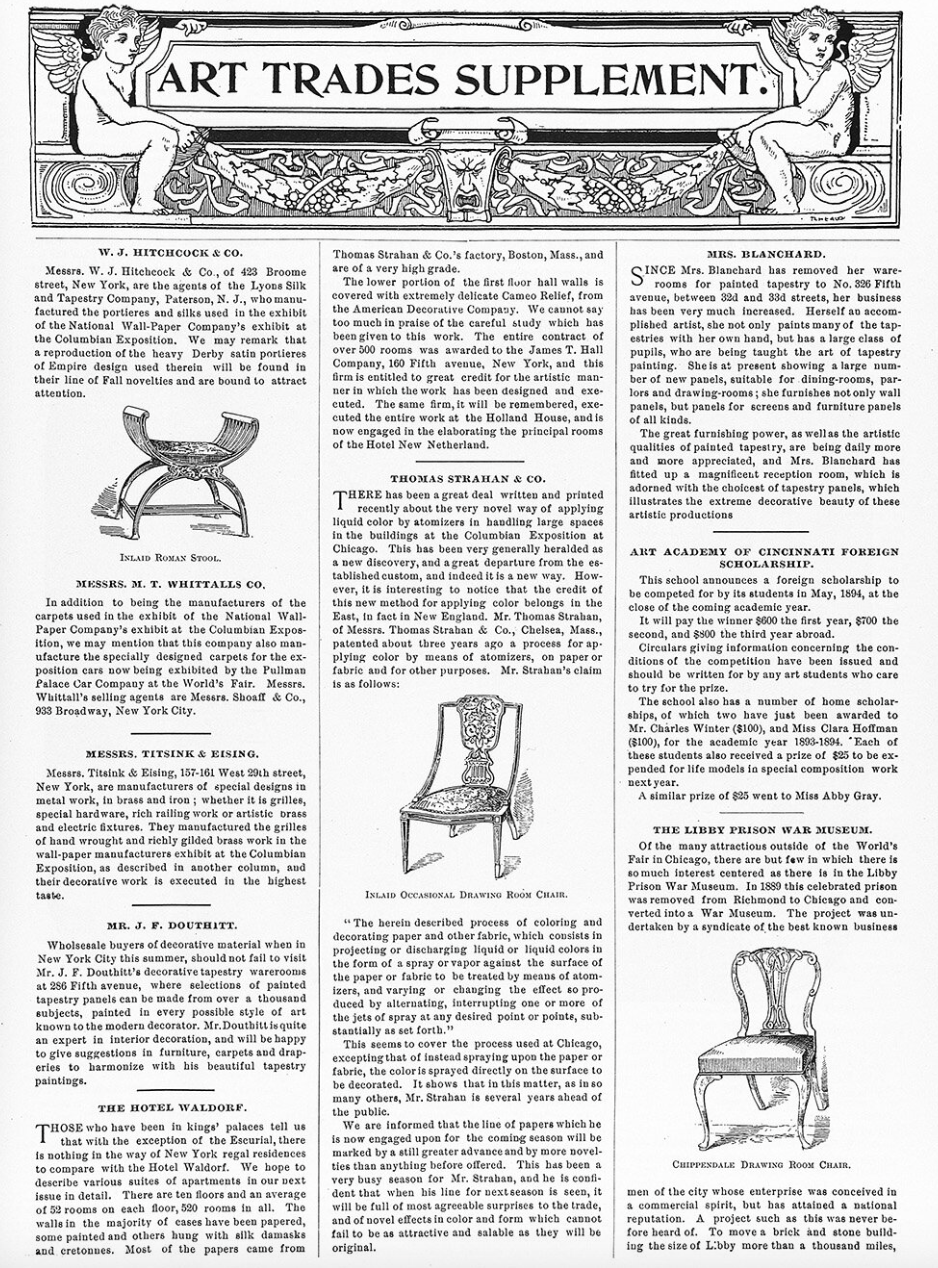
The Decorator and Furnisher Magazine in 1891 featuring a Thomas Strahan Patented Invention
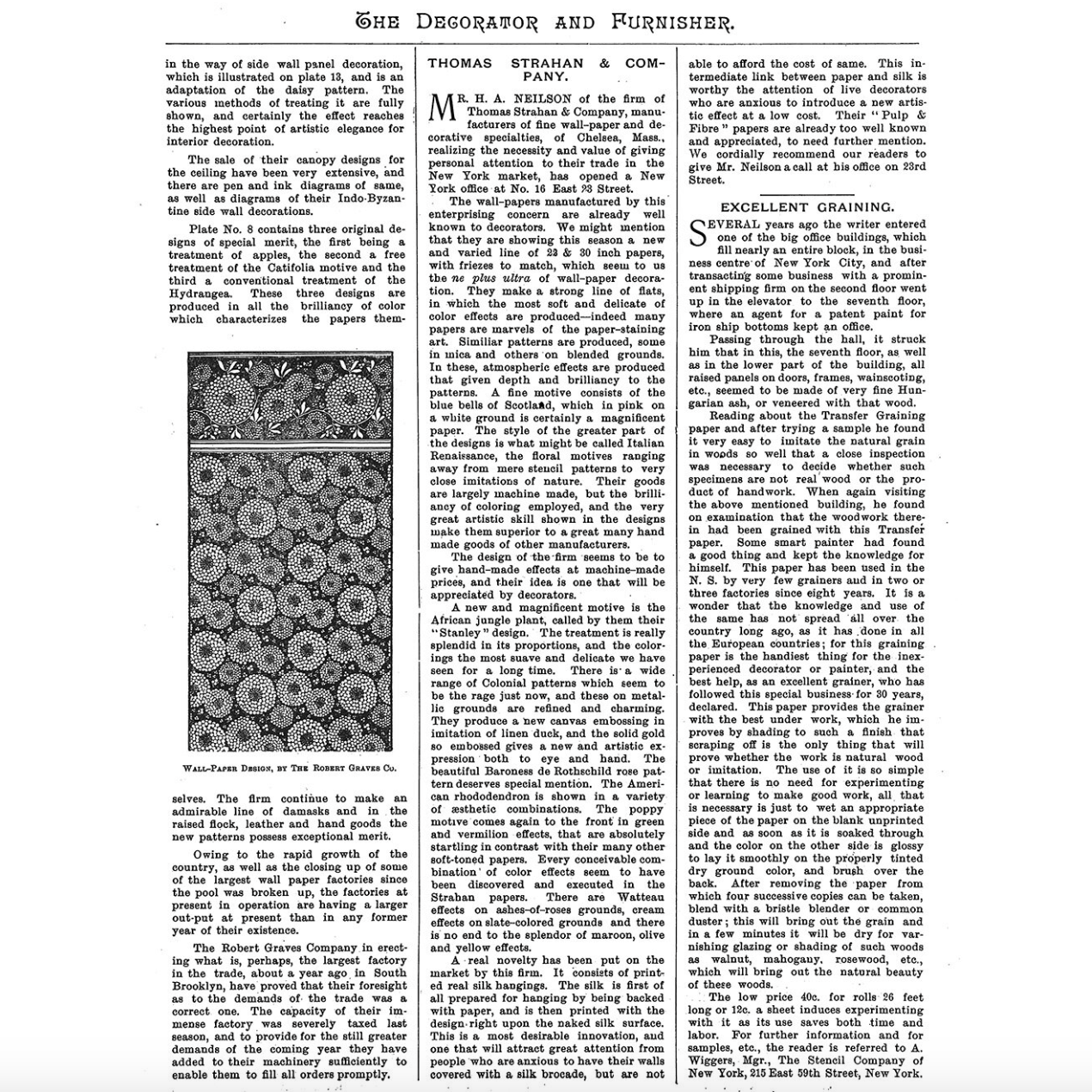
The Decorator and Furnisher Magazine in 1891 featuring New Designs and the NYC Office Opening
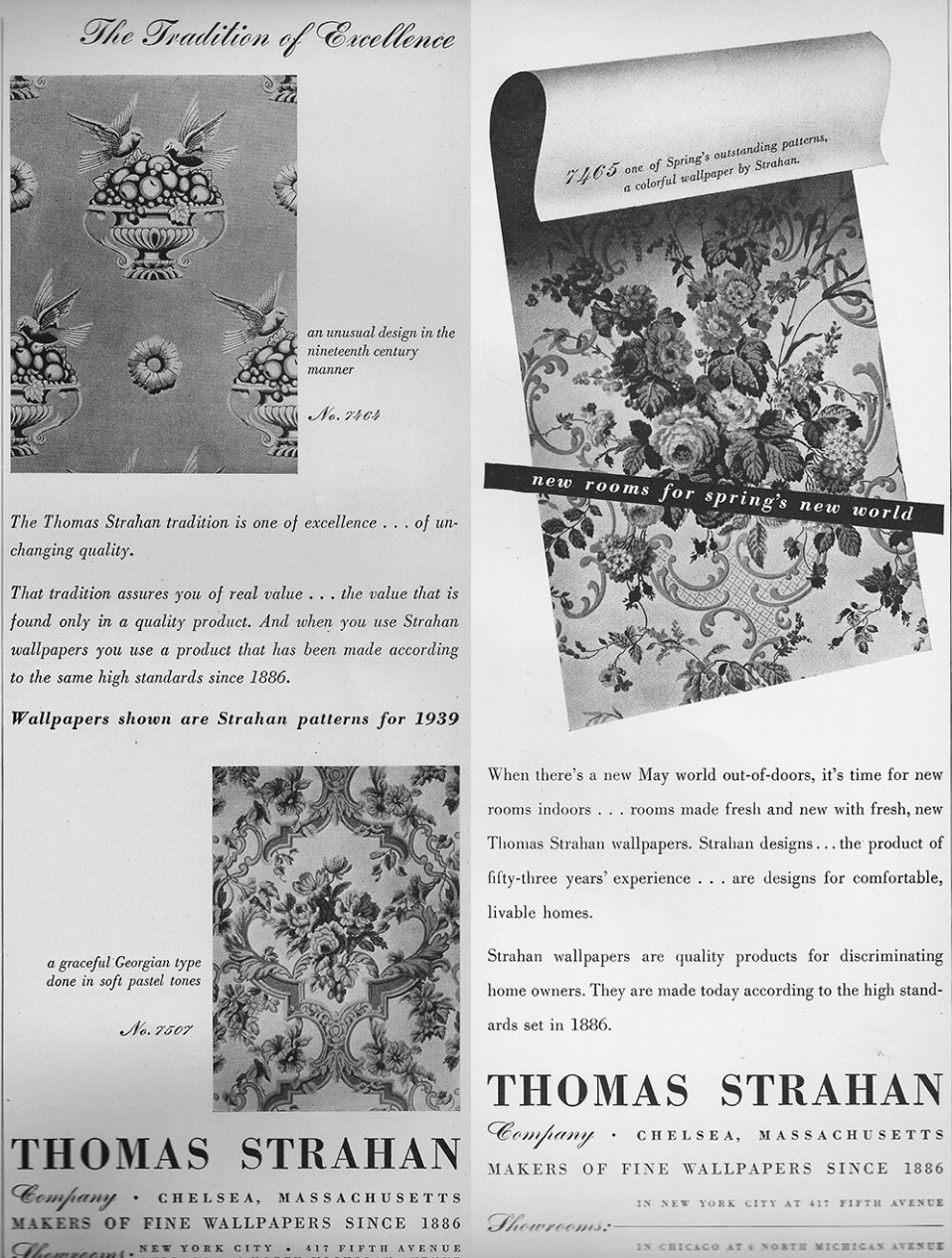
Thomas Strahan Advertisements in House Beautiful in 1939

Thomas Strahan Advertisement in 1969

Thomas Strahan Trade Card used at the 1876 US Centennial
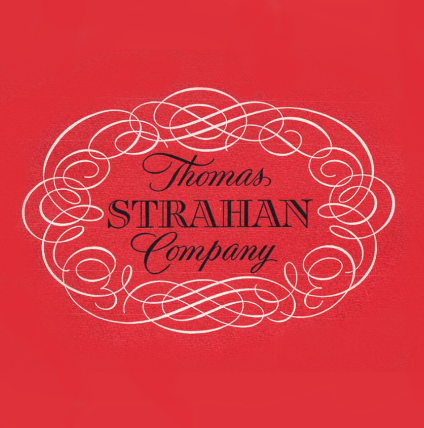
Thomas Strahan Co. 1948 Collection Book Logo
PRINTING TECHNIQUES OVER 138 YEARS
Thomas Strahan started as a hand-block printer in 1885. As automated wallpaper printing advanced, he incorporated surface-printing presses. The oldest of which was a Waldron Press manufactured in England in the 1880s. These surface-printing presses would have originally been powered by a series of large belts with a power takeoff from a large overhead rotating axle. The axle would run the length of the plant that would have been connected to and powered by a large steam engine located outside. During World War II, block-printing was discontinued due to labor shortages. When the surface-printing techniques (the most similar product to block-printed wallpaper) fell out of favor, the original Thomas Strahan manufactory built in 1903 was torn down in 2003. During this time, many of the designs were converted to either hand silk screen and/or high quality digital.
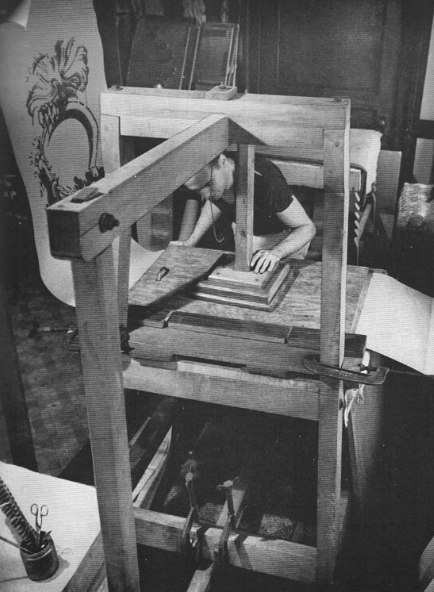
Block Printing at the Thomas Strahan Manufactory
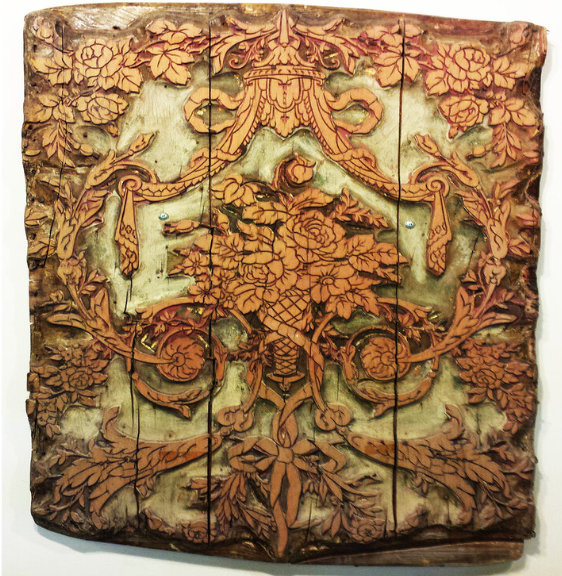
Wood-printing Block from the Thomas Strahan Manufactory
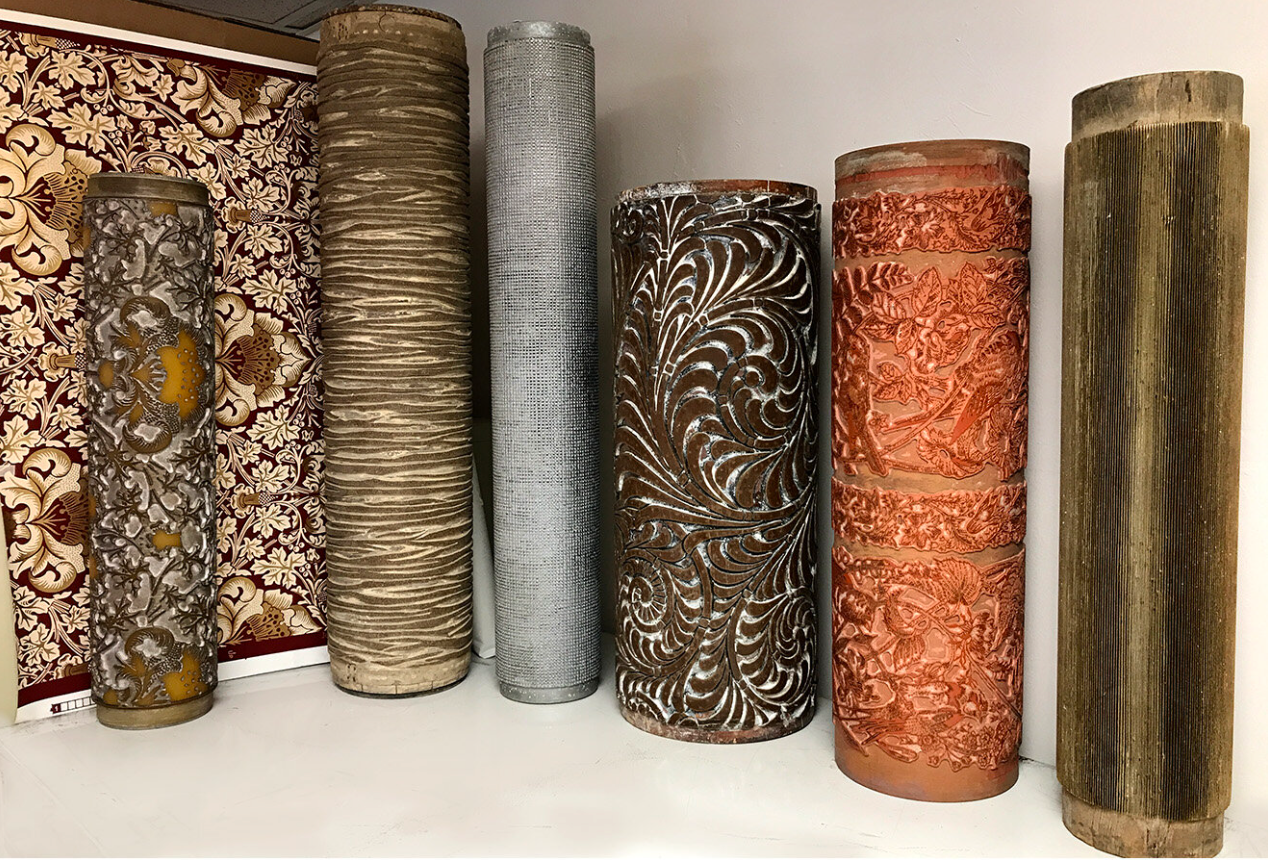
117 years of our Printing Technology (carved wood rollers, brass strips in wood cylinders, cork covered rollers, rubber covered wood, metal and laser-etched plastic)
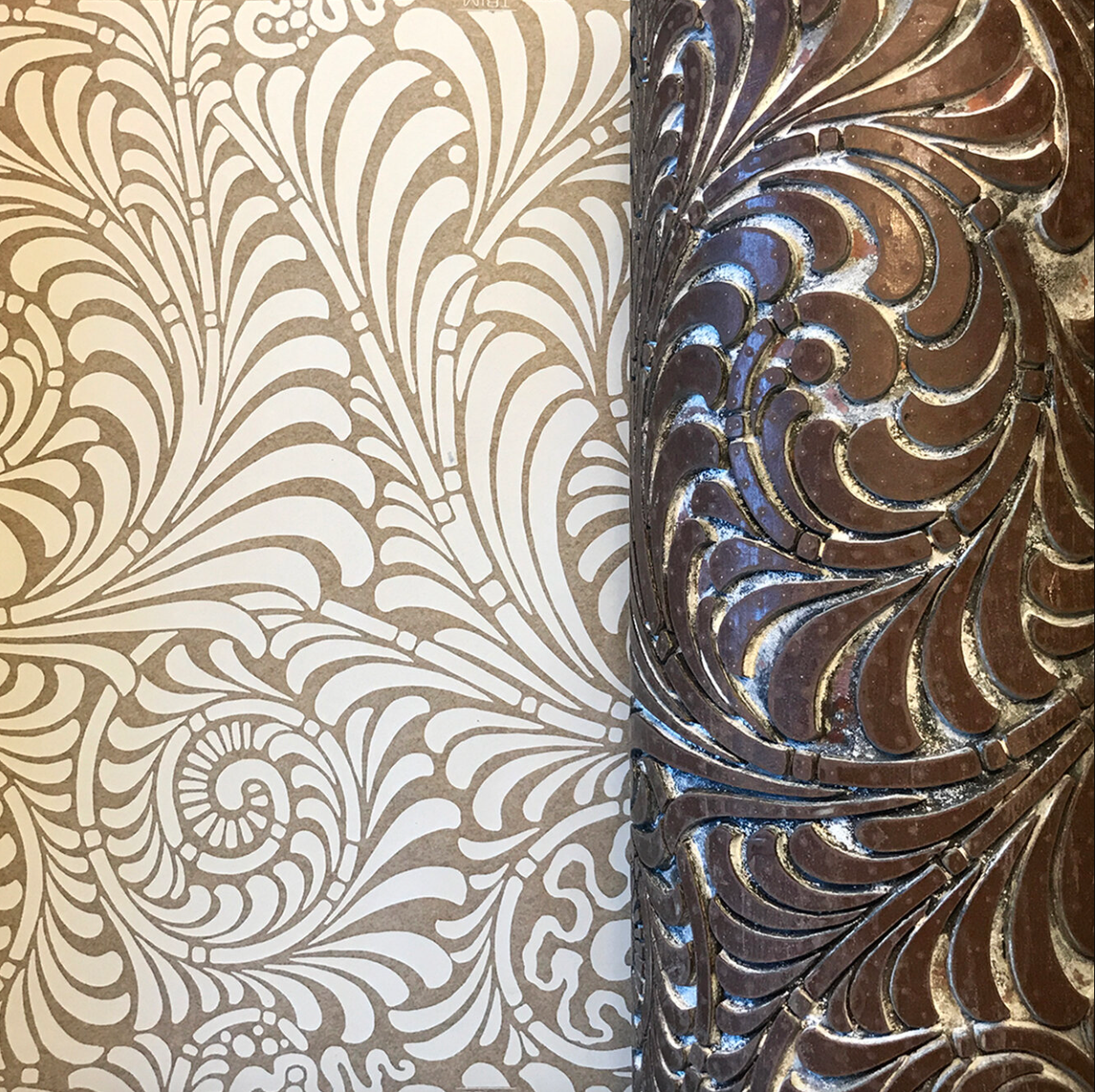
TS 721 Kelmscott Maple-roller design
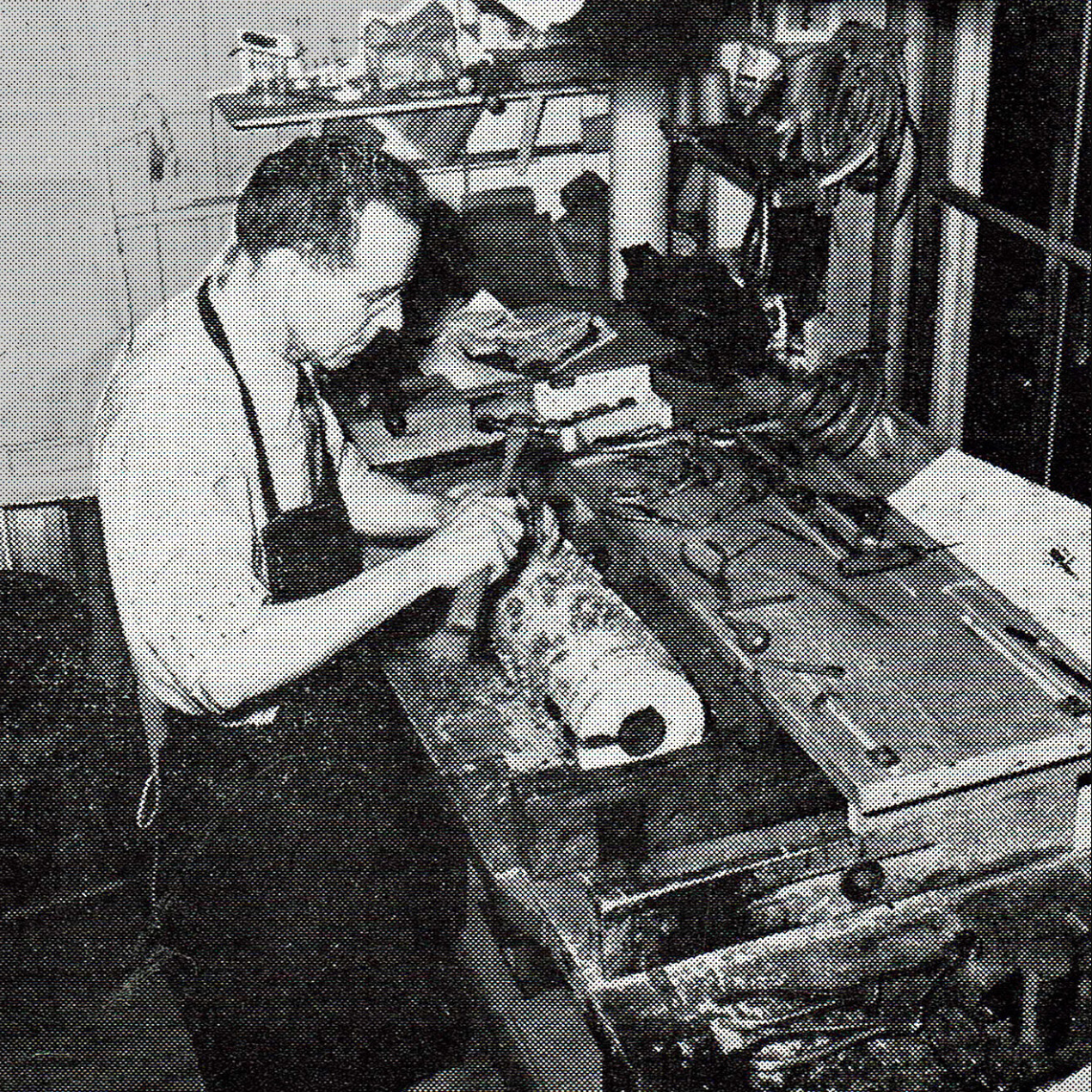
Paul Spannier Hand-carving and Adding Brass Strips to Maple Wood Cylinders for Surface-printing in 1961
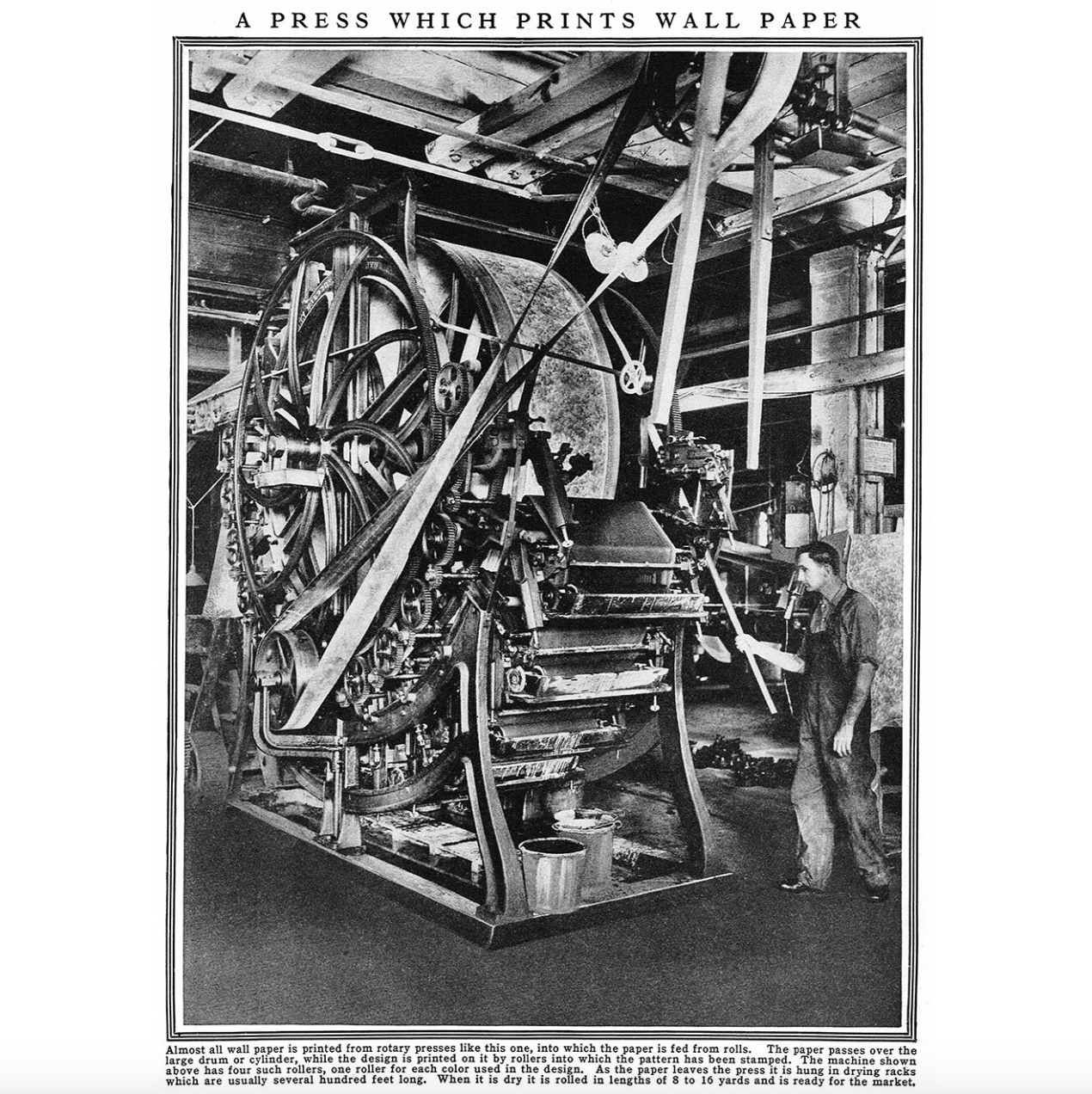
Leather "Take-off" Belts from Overhead Rotating Power Axle
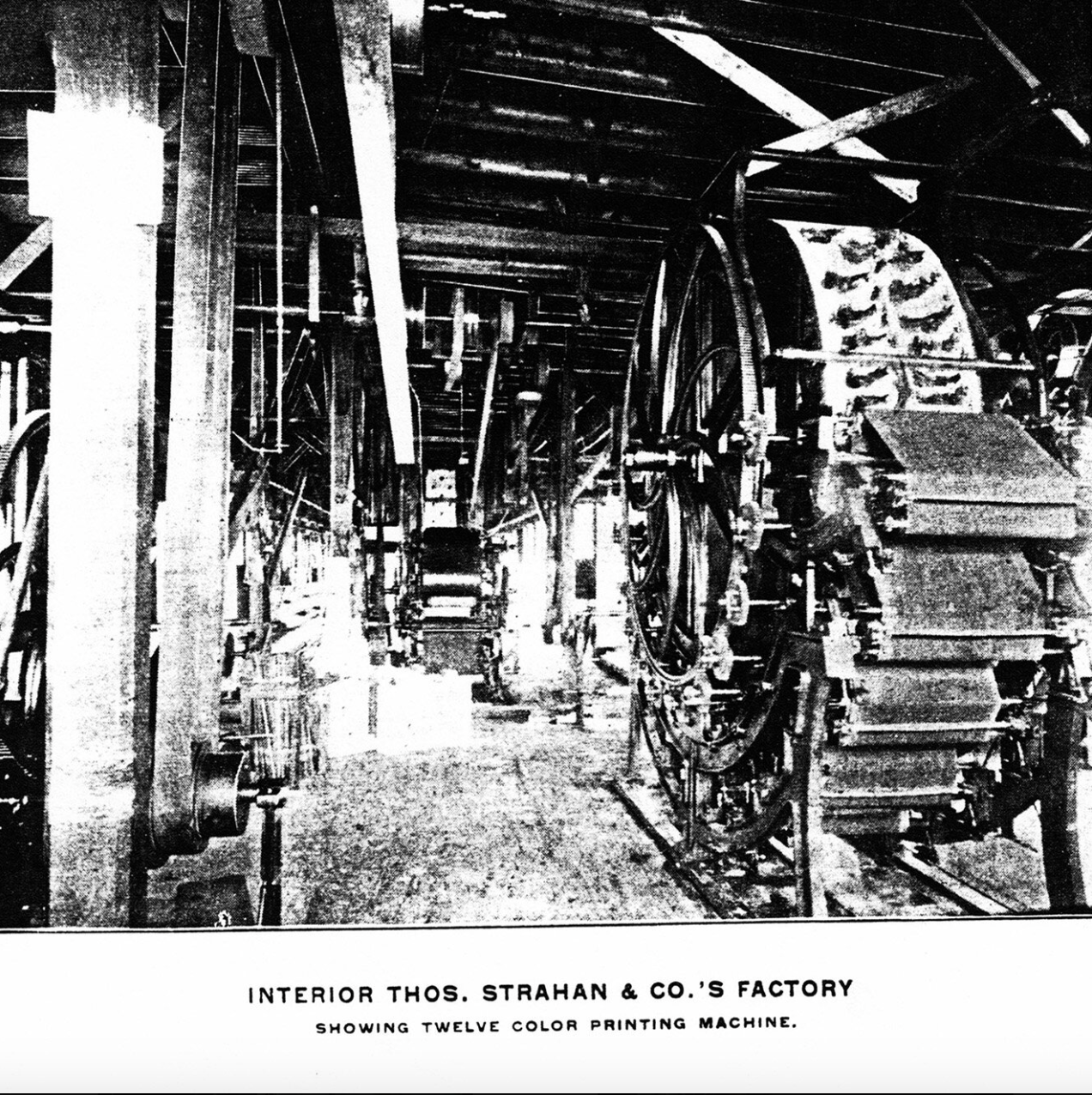
The New Thomas Strahan Factory in 1903
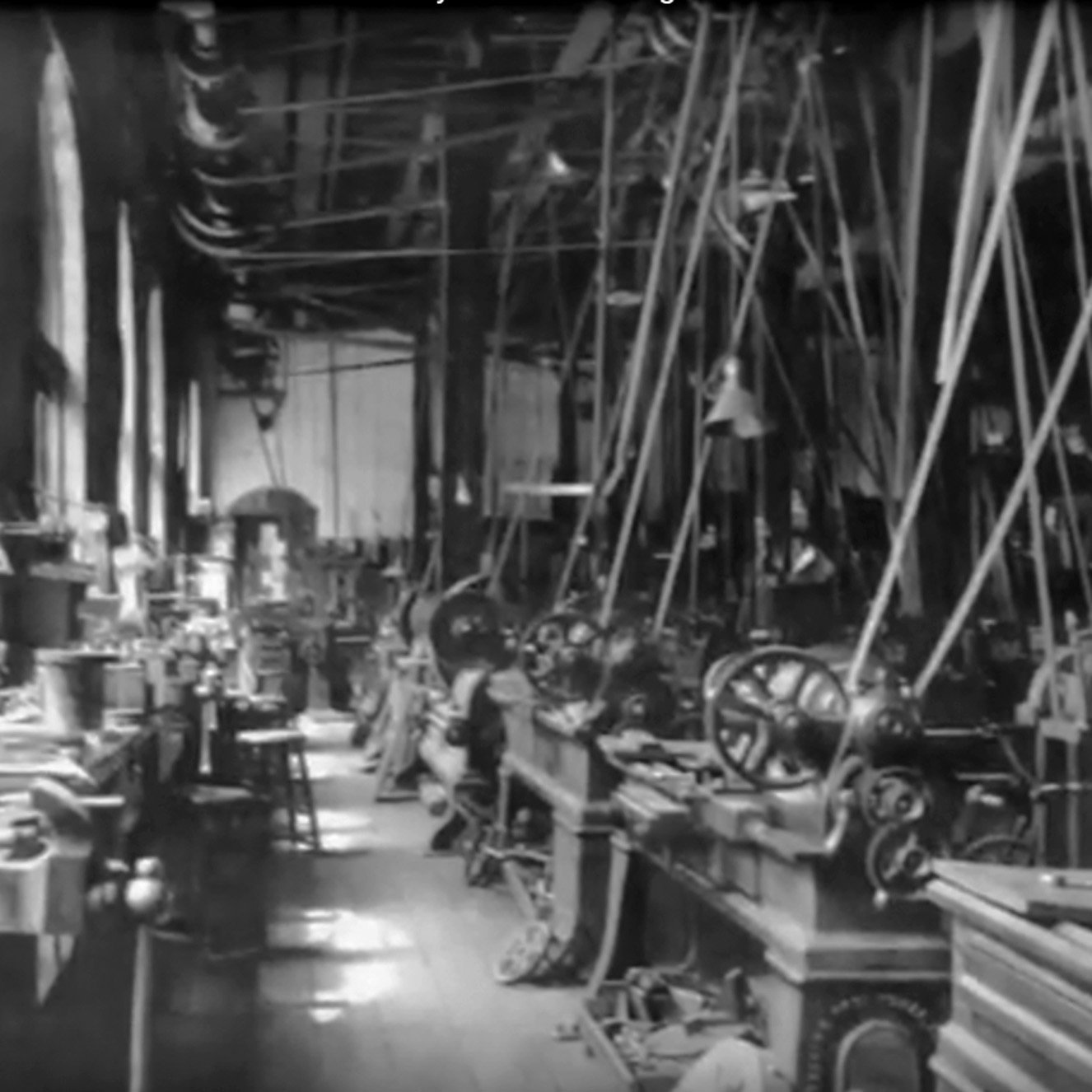
Large Belts Attached to Single Overhead Rotating Axle Running the Length of the Building being Powered by a Steam Engine located Outside the Main Building before Electricity
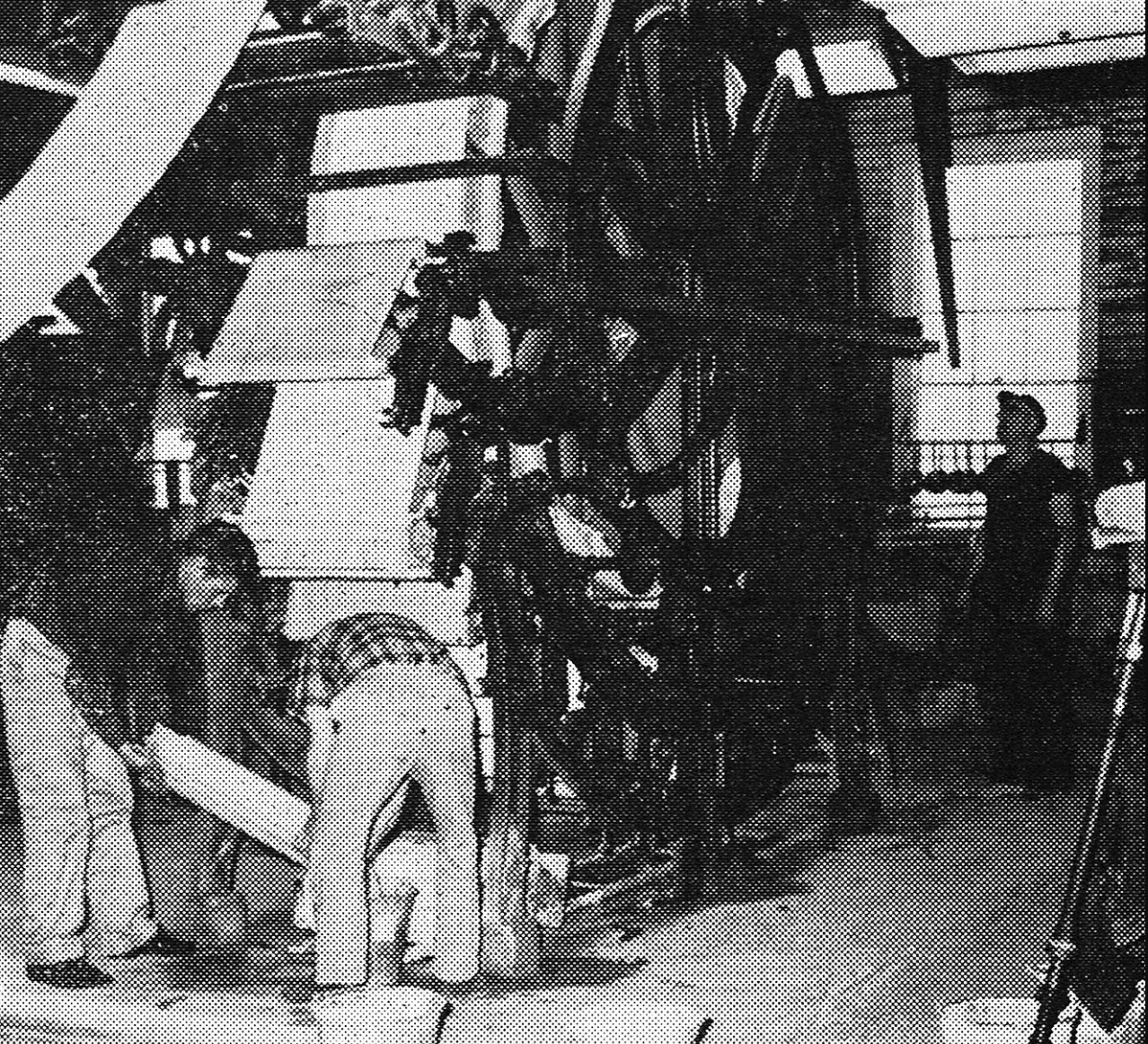
The Waldron Printer manufactured in England in the 1880s (used until 2003)
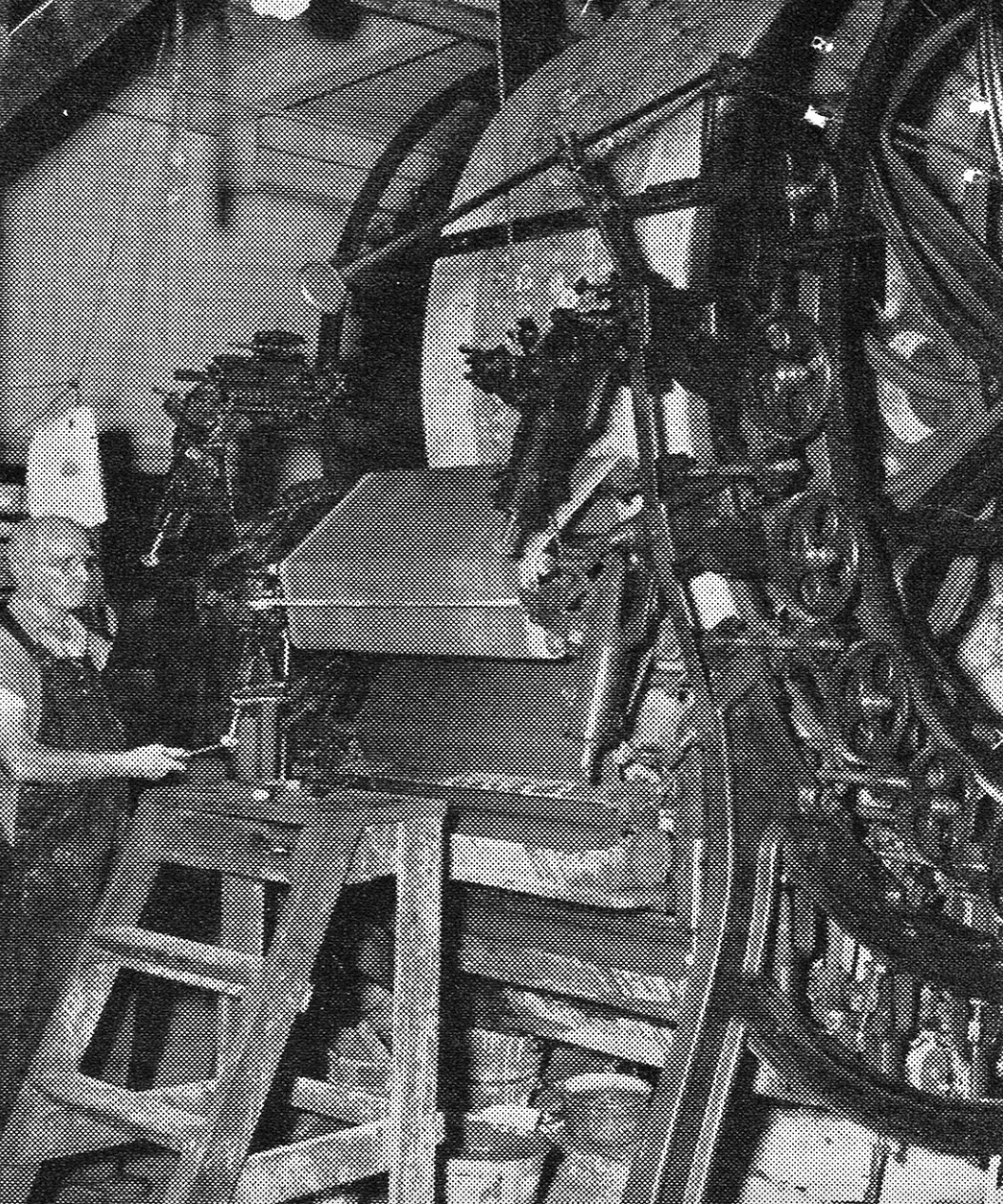
Tom Courtney Apprentice Agreement with the Company dated 1897
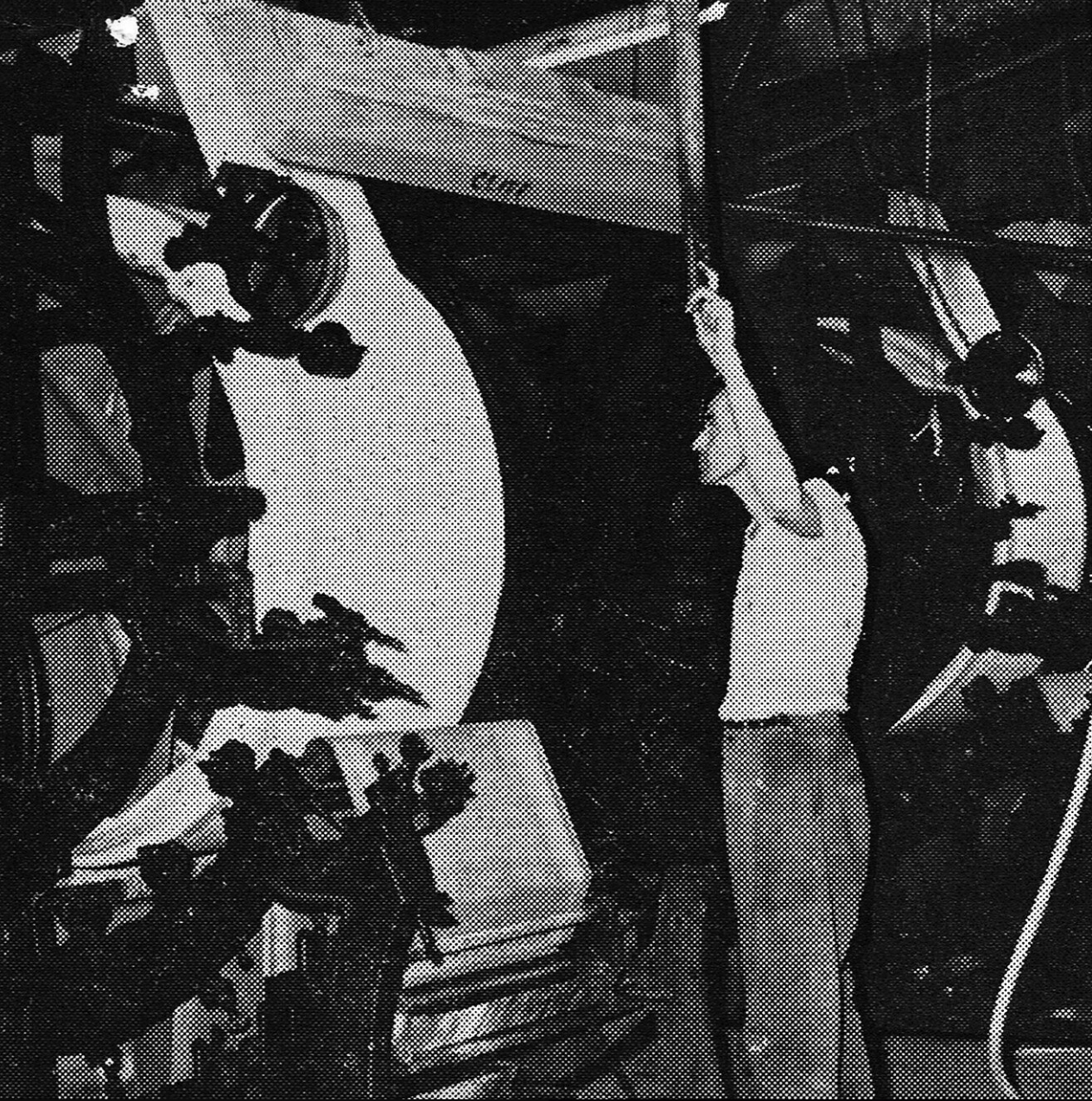
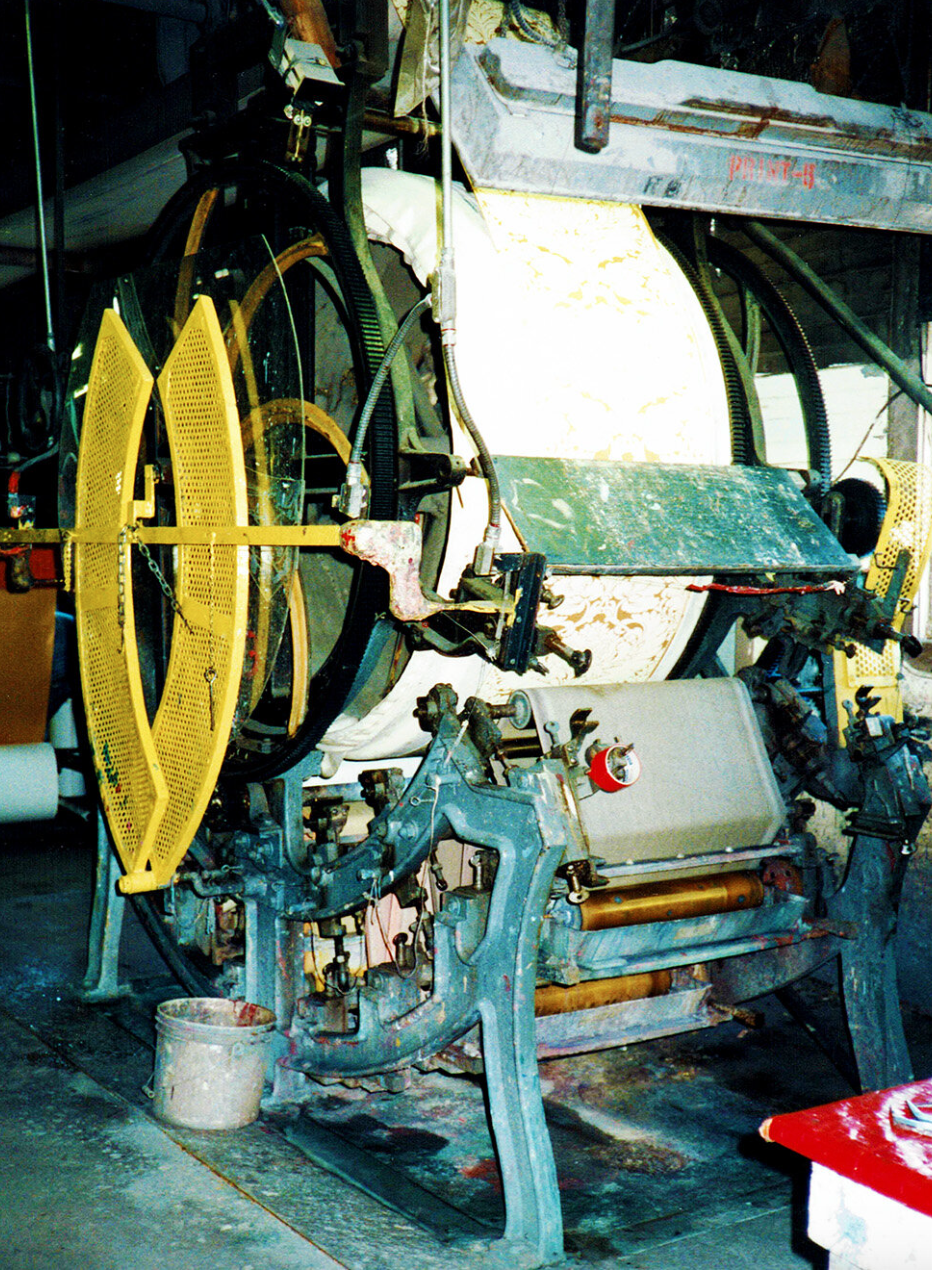
At Peak Production in the 1980s with the Seven Surface-printing Presses working 24/7 and producing 32,000 Rolls of Wallpaper per day
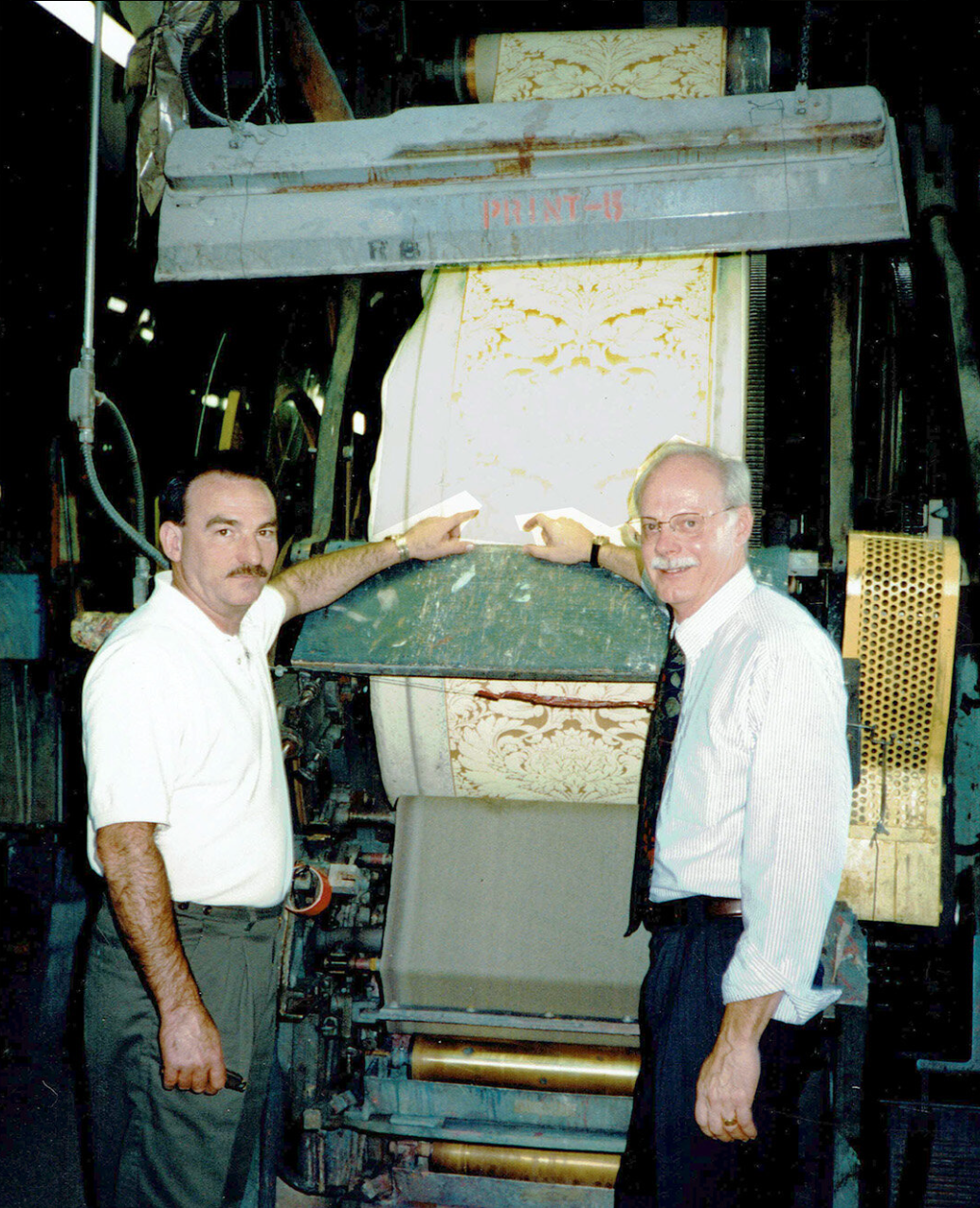
Richard Nylander (Right), one of the world's leading experts on historic wallpaper, and Pat Troville (Left) of Thomas Strahan inspecting a custom run of Codman House Damask for Historic New England in the 1990s
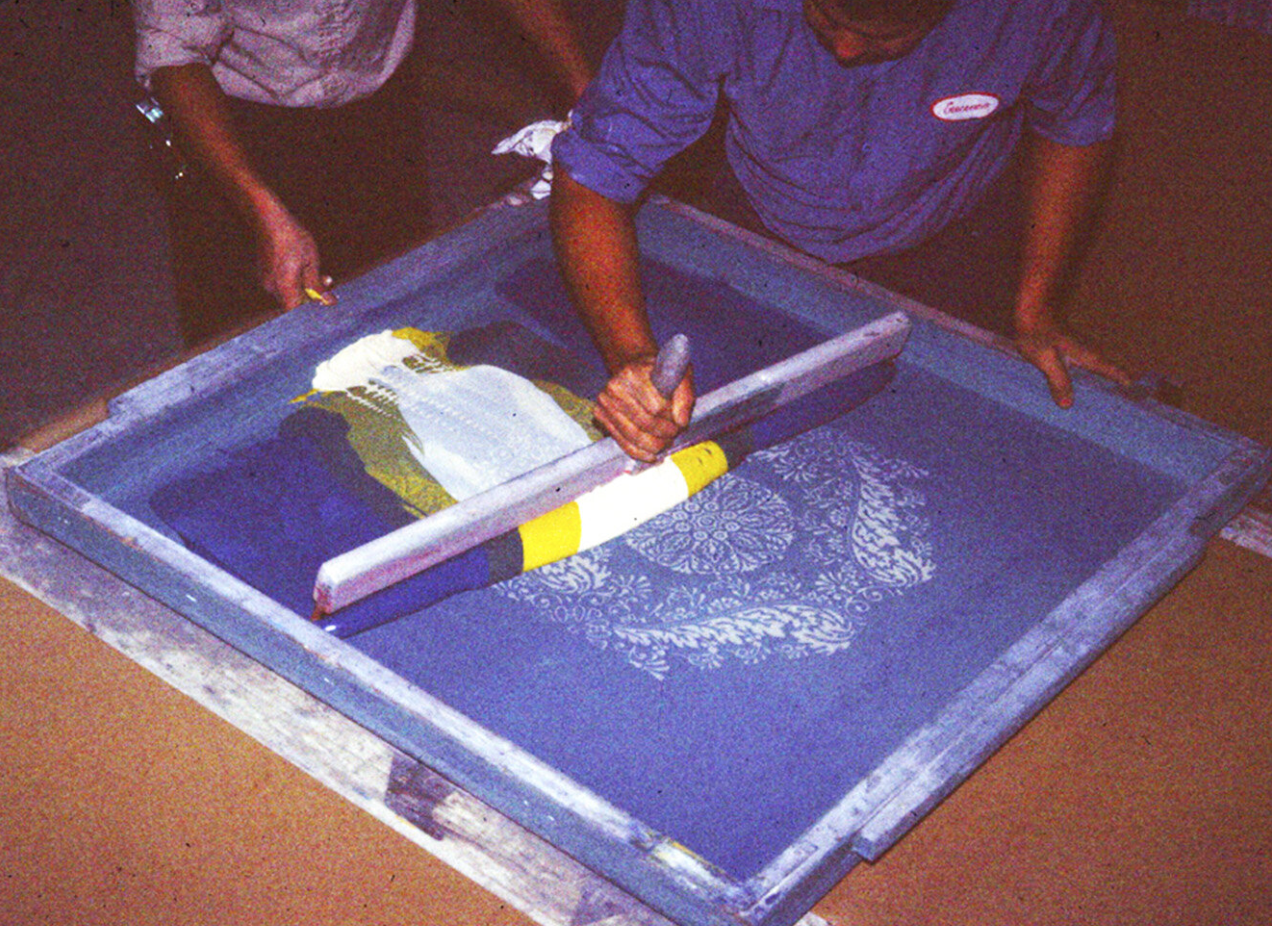
Using a silk screen to create an irise effect

Hand/Silk Screen Printing
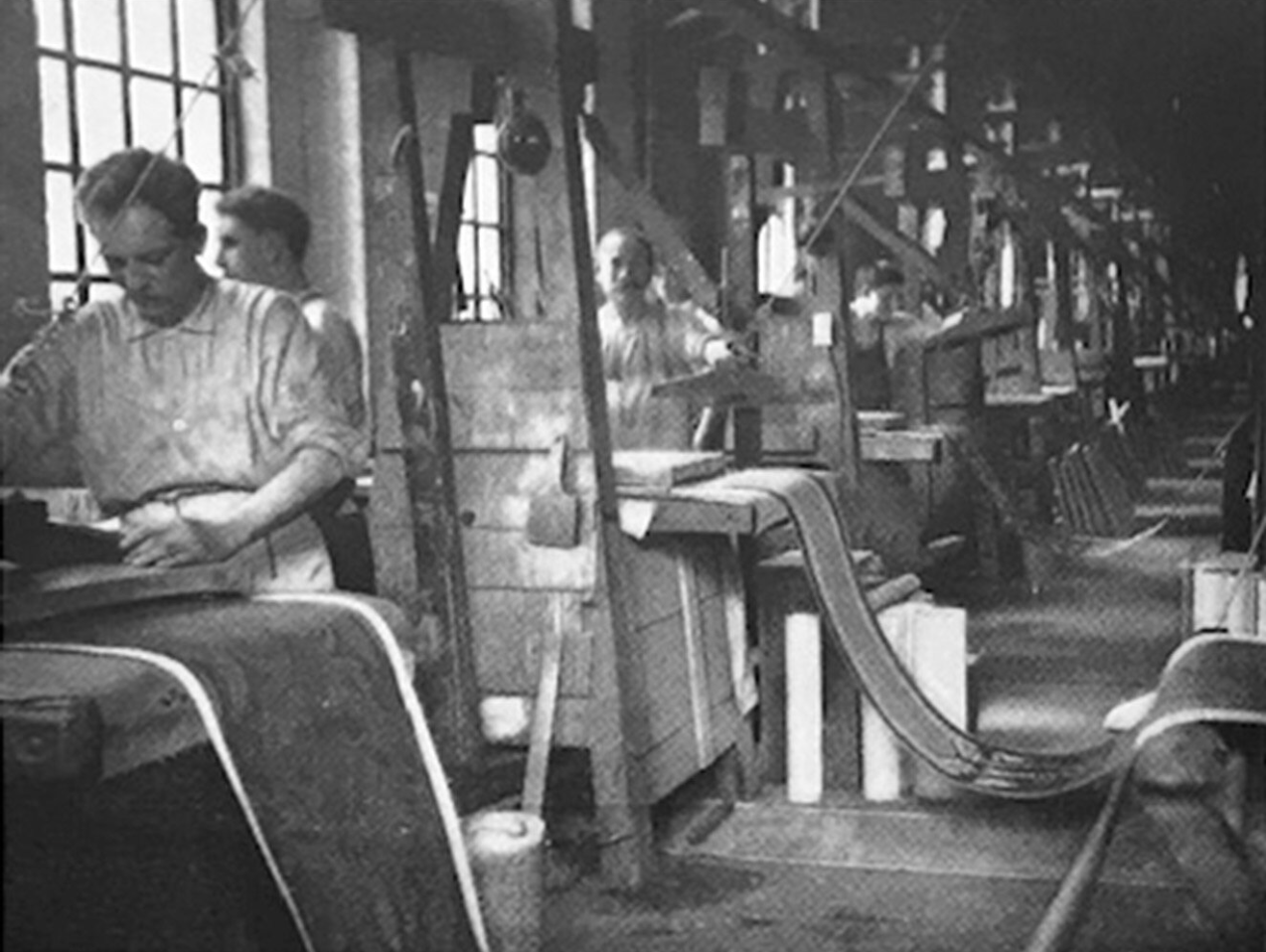
Block printing in 1915 at The Birge Manufactory
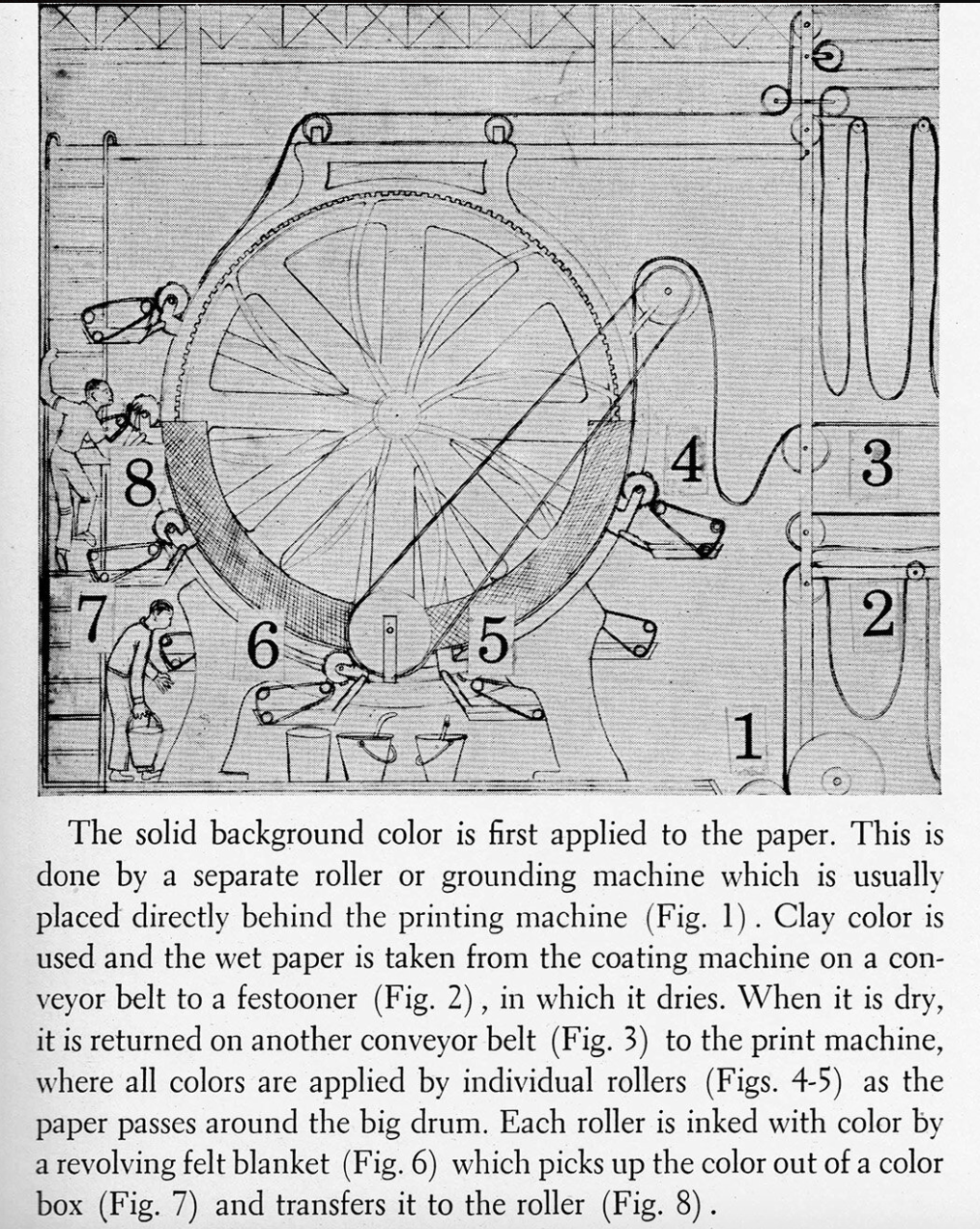
The Mechanics of Surface Printing
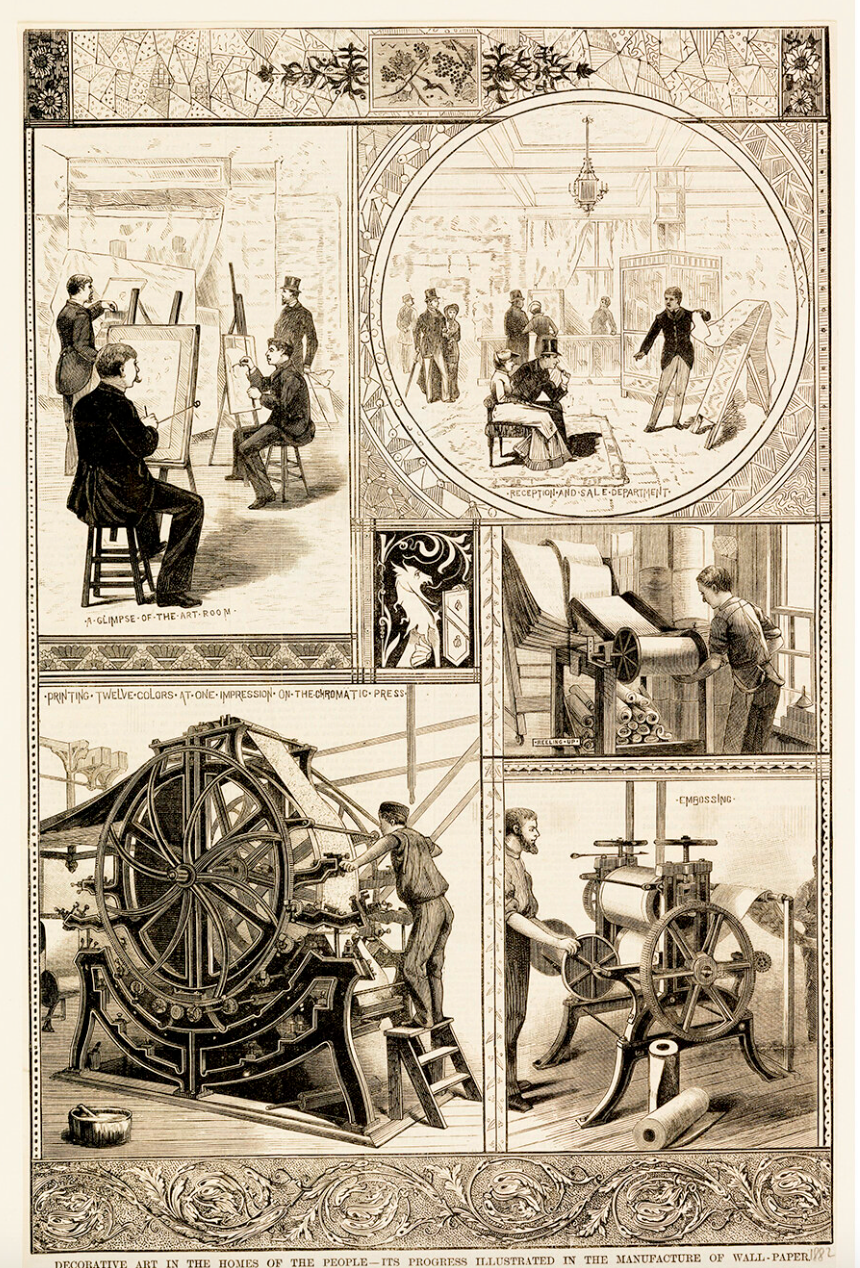
Cutting-edge Wallpaper Production in 1886
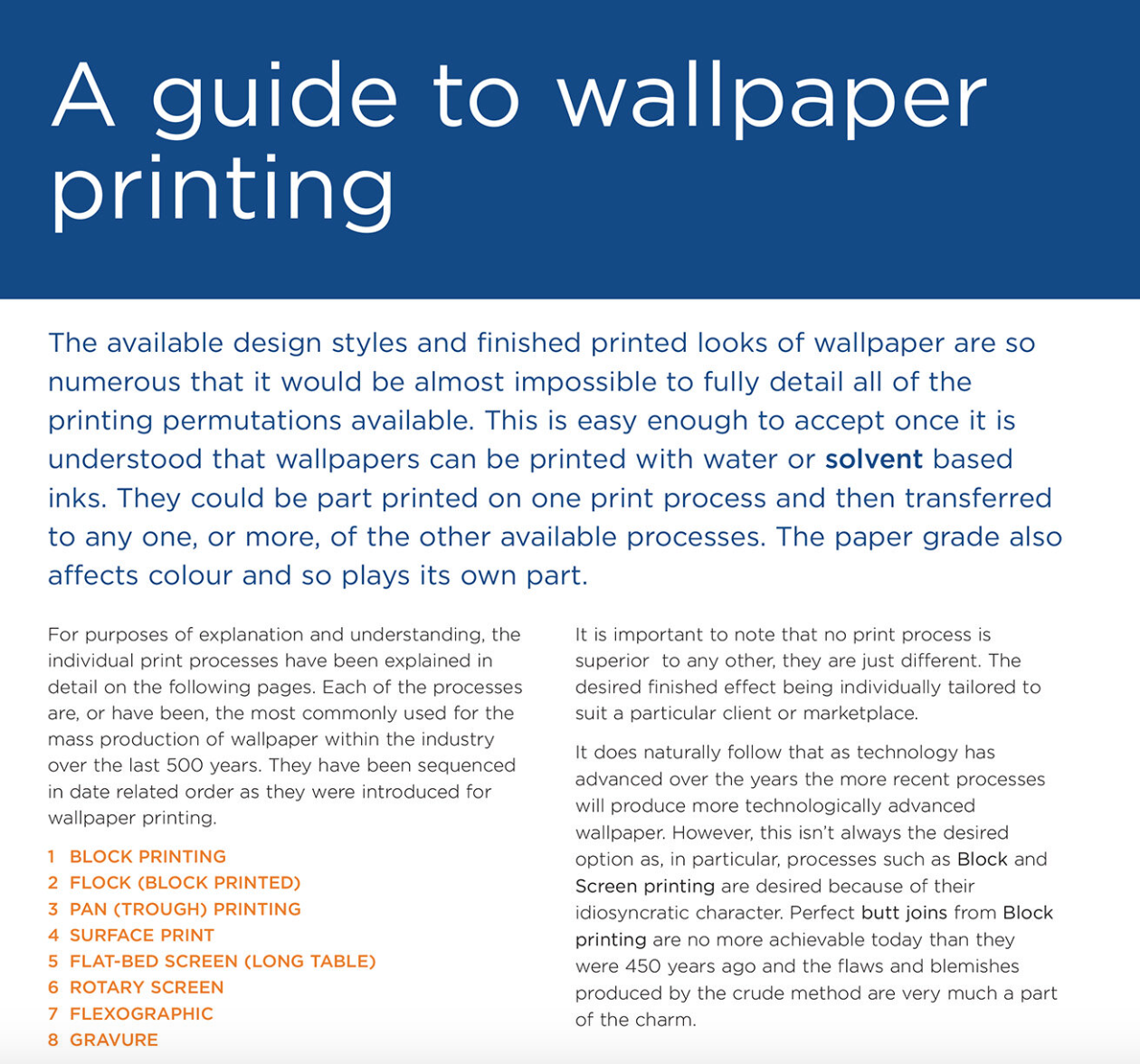
Antsey (the English Wallpaper Firm) guide to wallpaper printing
Note: We have extensive archives and not everything is photographed.
Click here to view 5,600 documents from the Wallpaper Aficionado website.
Click here to view 1,476 documents from the Historic new England website.
Click here to view 224 documents from the Cooper Hewitt website.












